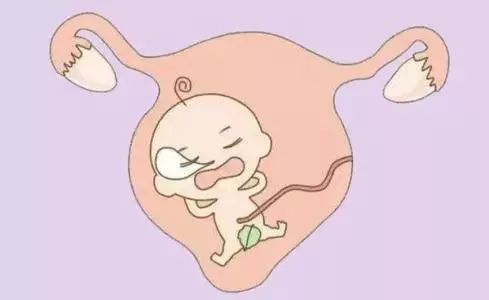Why does the lining of the uterus thin? Three major culprits and scientific solutions
How is the lining of the uterus, the “soil” that nurtures life, being damaged?
The lining of the uterus is the “golden soil” where embryos are laid, and should ideally be 7-12mm thick at the time of ovulation, but about 25% of infertile women around the world suffer from a thin endometrial lining (<7mm). This seemingly simple layer of mucosal tissue is actually a sophisticated collaborative system of hormone regulation, cell regeneration and angiogenesis.

Scientific Diagnostic Criteria for Thin Endometrium
The thickness of the endometrial lining is monitored dynamically by vaginal ultrasound and is determined in conjunction with the menstrual cycle:
Early hyperplasia (day 5-7 of menstruation): 3-5mm
Ovulatory phase (14th day of menstruation): ≥7mm (optimal thickness for implantation)
Luteal phase (21st day of menstruation): 10-14mm
Pathological endometrial thinness is diagnosed if the thickness at ovulation is <7mm for two consecutive cycles. 2023 Fertility and Sterility study states that the clinical pregnancy rate in such patients is only 18%, significantly lower than the 42% in the normal population.
Three major culprits cause endometrial thinning
- Endocrine disorders – a chain reaction of hormonal imbalance
Estrogen deficiency: when serum estradiol is <200pg/ml, the growth of endometrial glands is restricted.
Luteal insufficiency: Progesterone <10ng/ml leads to impaired mesenchymal metaplasia
Typical case: thin endothelium in 67%** of patients with polycystic ovary syndrome (PCOS)
Data support: 10% elevation of the stress hormone cortisol decreases endometrial thickness by 0.3mm (Human Reproduction 2022)
- Endometrial lesions – a fatal blow of structural destruction
Endometrial polyps: even <1cm polyps can reduce local blood flow by up to 40 Chronic endometritis: decreased endometrial repair with CD138 positive cells >5/HPF
Tuberculous endometritis: leads to permanent damage to the basement membrane, with a recurrence rate of up to 35
- Abortion – irreversible mechanical damage
Post-scraping: 1 abortion leads to a 0.8mm decrease in endothelial thickness, and the probability of damaging the basal layer for more than 3 abortions reaches 72
Uterine adhesion: the pregnancy rate of patients with moderate adhesion is only 15%, and the rate of severe adhesion is almost 0%.
Alarming data: among the patients with secondary infertility after abortion, 83% have uterine cavity abnormalities。
The Triple Disaster of a Thin Endometrium
Fertility cliff: the rate of implantation falls off a cliff
At <5mm thickness, the spontaneous pregnancy rate is <5%
In IVF cycles, for every 1mm reduction in thickness, the live birth rate drops by 11
Pregnancy Defense: Miscarriage Risk Soars
Early miscarriage rate 32% in patients with thin lining (12% in normal population)
Placental abruption risk increases by 2.3 times in mid-pregnancy
Health Alert: Gynecological Diseases Follow
Menstrual flow <20ml (normal 30-80ml)
4 times higher incidence of abnormal uterine bleeding
50% increased risk of premature ovarian failure
Precise diagnosis: find out the real culprit of thinning
Three-dimensional ultrasound + blood flow monitoring technology
Endometrial volume <2.5ml indicates severe atrophy Spiral artery pulsatility index (PI) >3.0 indicates inadequate perfusion.
Molecular Biology
VEGF expression: <200pg/mL indicates impaired angiogenesis
Integrin αvβ3 assay: essential biomarker during the window of implantation
The truth under direct hysteroscopic visualization。

IUA grading system: the international authoritative standard for the assessment of uterine adhesions
Stem Cell Nest Test: Evaluating Regenerative Potential through CD44+/CD24+ Cell Counts
Scientific Treatment Options: From Repair to Regeneration
Hormone Replacement Therapy (HRT)
Estrogen pulse administration: 4-8mg/day of oral estradiol valerate + transdermal patch
Growth hormone adjuvant: 3IU subcutaneous injection per week to stimulate IGF-1 secretion
Efficacy data: average increase in endothelial thickness of 2.3mm after 6 months of combined treatment
Physical Therapy Revolution
Uterine perfusion therapy: monthly injection of autologous platelet-rich plasma (PRP) to promote neovascularization
Endometrial Scratching: Creates controlled damage on the 21st day of menstruation to activate repair mechanisms
Stem Cell Regenerative Medicine
Bone Marrow Mesenchymal Stem Cell Transplantation: 5 million units of stem cells injected through uterine catheterization
Clinical breakthrough: pregnancy rate of 38% after treatment in patients with severe uterine adhesions (STEM CELLS 2023)
The Art of Surgical Repair
Uterine Adhesion Separation: Cold Knife Technique to Protect Residual Endometrium
Endometrial grafting: taking material from the posterior wall of the uterus and grafting it to the anterior wall
Prevention strategies: guarding the defense of the soil of life
Contraceptive Education: Reducing Unwanted Pregnancies and Abortion Rates
Infection prevention and control: treating chronic pelvic inflammatory disease and preventing the spread of tuberculosis
Stress management: reduce cortisol levels by 20% through positive thinking meditation
A guide to hope for patients
Even with an endometrial thickness of only 4-5mm, there is still a 15% chance of a live birth:
Embryo Quality Prioritization: Selection of high quality blastocysts after PGT screening
Sequential transfer strategy: D3 blastocyst + D5 blastocyst combination transfer
Immunomodulatory therapy: use of granulocyte colony-stimulating factor (G-CSF)
Remember: thin endometrium is not the end of fertility! Through the combination of precision medicine and assisted reproductive technology, there is still hope for a healthy harvest of life.
相关推荐
- Caloric Restriction Reverses Ovarian Aging|New Evidence for Scientific Fertility Extension
- Advanced IVF Success Rates | Age Limits and Mitochondrial Technology Breakthroughs
- International Standard Procedures and Selection Strategies for In Vitro Fertilization
- Solving the Mystery of Fertility: 4 Common Factors of Infertility in Global Perspective
- Kyrgyzstan IVF 5 Golden Habits for High Egg Quality
Search within the site
Surrogacy News
Hot Tags.
Kyrgyzstan Surrogacy Agency,Global IVF Hospitals,International Surrogate Mother Recruitment